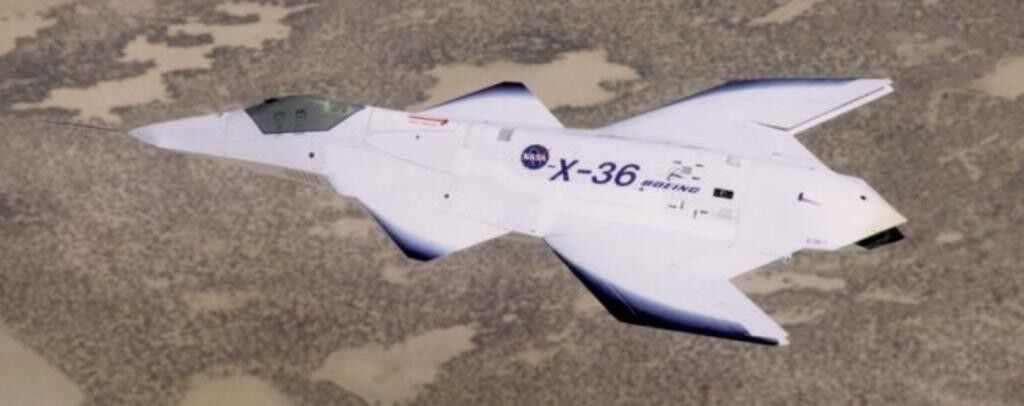✈️ X-36 Tailless Fighter Agility Research Aircraft — Review
🧩 Overview
The X-36 was a remotely piloted, subscale experimental aircraft developed by McDonnell Douglas (later Boeing) and NASA in the mid-1990s. Its goal? To test whether a fighter jet without a traditional tail could be more agile, stealthy, and efficient — all without sacrificing control.
Its radical shape and unconventional flight systems made it a successful and important stepping stone toward future stealth and agility-focused aircraft.
⚙️ Specifications
-
First flight: May 17, 1997
-
Status: Experimental (2 test aircraft built)
-
Scale: 28% of a full-size fighter
-
Length: 19 ft (5.9 m)
-
Wingspan: 10 ft (3 m)
-
Height: 3 ft (1 m)
-
Max speed: Approx. 190 knots (220 mph / 354 km/h)
-
Engine: 1 × Williams F112 turbofan
-
Flight control: Fully remote piloted, with advanced fly-by-wire and thrust vectoring
-
Total flights: 31 successful test flights
🛠 Design Highlights
-
No vertical or horizontal stabilizers: Achieved control through split ailerons, canards, and thrust vectoring
-
Highly stealth-optimized shape: Very low radar cross-section due to smooth body and lack of tail surfaces
-
Fly-by-wire control system: Automated stability in an otherwise inherently unstable airframe
-
Ground-based pilot: Piloted remotely with live video and telemetry feedback
-
Lightweight composite construction: To minimize weight and simulate next-gen fighter designs
🧱 Strengths
-
✅ Extreme agility: Far more maneuverable than traditional fighters
-
✅ High stealth potential: No vertical tail = very low radar signature
-
✅ Advanced flight control testing: Fly-by-wire and thrust vectoring worked beautifully
-
✅ Paved the way for future fighter design (including elements seen in NGAD and drone combat research)
-
✅ Successful test program: 100% mission success in all 31 flights
⚠️ Weaknesses
-
❌ Not full-size: Only a scaled-down prototype; it never matured into a full combat jet
-
❌ Unmanned only: Remote control limited its real-time capabilities
-
❌ Limited speed and performance envelope: Focused on agility testing, not raw power
-
❌ No combat testing or weapons integration
🏁 Final Verdict
| Category | Rating (★ out of 5) |
|---|---|
| Innovation | ★★★★★ |
| Agility | ★★★★★ |
| Stealth Design | ★★★★★ |
| Combat Readiness | ★☆☆☆☆ |
| Legacy & Influence | ★★★★☆ |
| Cool Factor | ★★★★☆ |
🔚 Final Thoughts
The X-36 didn’t go to war or even full-scale production, but it was a brilliant vision of what future jets could be: faster, lighter, stealthier, and more agile — all while ditching traditional control surfaces.
It helped inform the development of tailless drones, modern stealth fighters, and the sixth-generation concepts now being explored under the NGAD (Next Generation Air Dominance) program.

Comments are closed